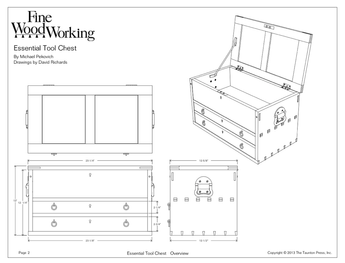I’m finishing a set of cherry kitchen cabinets. So far i’ve decided on a sprayed on alcohol dye followed by lacquer. The test pieces i’ve done were done with a gloss deft brushing lacquer and turned out well. I plan to spray on the lacquer for the actual cabinets. Being kitchen cabs I would like them to be reasonably tough and water resistant. my questions are:
1. Is a pre-cat lacquer worth the extra cost and how difficult is it to find. (san diego)
2. is there a benefit to using a lacquer sealer first? Vinyl?
3 How big a deal is the yellowing or color shift with age?
I’m a relative spray novice so any advice would be appreciated, thanks
jeff r.















Replies
1. Is a pre-cat lacquer worth the extra cost and how difficult is it to find. (san diego)
Not difficult to find if you frequent paint stores. Sherwin Williams, anyone that carries DV, DeVoe, Columbia, BM, etc - ought to have. You won't find it on the shelves of Home Depot. It is worth the extra cost in any finish to get a finish that's right for the project. Precat was made for kitchens and baths - areas where the wood will take a lot of handling and abuse. It's a good choice for cabinets.
2. is there a benefit to using a lacquer sealer first? Vinyl?
Sealers are not a must. Like anything else, you have to assess what you're accomplishing by sealing. Are there contaminants, or is there an adhesion problem? On your run of the mill woodwork, like oak, ash, cherry, you don't need a sealer. If you decide to use one, vinyl is designed to go under conversion finishes, and also works well at sealing woods with a lot of oils or resins, such as you would find with rosewood.
3 How big a deal is the yellowing or color shift with age?
Don't know if I can answer that. Nothing I've ever put precat on has gotten antique yet. The crosslinking of the finish would make me think that the yellowing would be either non existant or at least significantly less than regular nitro lacquer. Perhaps others can offer more there.
With precat, pay attention to the label. Conversion finishes, as a rule, can be more finicky. Altering the finish by thinning can change its drying properties, as can your choice of thinner. Allowing too much time to pass between coats can cause the second coat to fail for lack of adhesion. I think precat is a little more forgiving that catalyzed where you have to measure and mix the acid to the batch. It at least takes that step out of your hands. Its also more difficult to successfull rub out, at least if you're used to regular lacquers. Not that it can't be done, it's just a little more challenging, especially if this is your first go at it.
The bright side, it dries fast and hard, recoats quick, and is a heck of a durable finish. Precats are marketed more or less to the smaller shops that think volume equates to actually filling the pressure pot. Even as a novice, if you have the workings of the gun down and do good prepwork, you ought to have a good experience with it. Best of luck.
"The child is grown / The dream is gone / And I have become / Comfortably numb " lyrics by Roger Waters
Hi Jeff,
As a professional finisher I'd be happy to give you my opinions on this subject.
1. I think precat lacquer is worth the cost, which is marginal with some commercial retailers. It's more durable than regular lacquer and yet is much easier to work with than a two component catalyzed system. Sherwin Williams makes an excellent precat lacquer. But, with the VOC laws in California, I don't know if they retail it down there or not. Up here in Oregon it is readily available. Behlen has a precat available by mail order. I dunno if they'll ship it to California or not, though.
2. There is a definite advantage to using vinyl sealer over the standard nitrocellulose (ie., shopgrade lacquer) sealer. Vinyl sealers will give you excellent moisture resistance and help eliminate those pesky white blush rings that beer cans tend to leave in a regular lacquer finish. Regular nitro sealer offers virtually no moisture protection if the moisture is allowed to remain in contact for any appreciable length of time. The disadvantage is that vinyl sealer isn't as user-friendly in terms of sanding. I find that it has to dry longer and even then it loads up (gums up) in my sandpaper easily. Professionally I tend to avoid the vinyl sealer unless a client specifies it under AWI (Architectural Woodworking Institute) specs or something like that. And that's simply because it takes me longer to finish using the vinyl. But, if moisture resistance is important to you, I would highly recommend going with the vinyl sealer.
3. There are actually two color issues with age. One is the yellowing of the lacquer. The other is the continued oxidization of the wood itself. As long as it's exposed to light most woods that oxidize easily unfinished will oxidize after being finished. As for the yellowing issue... I guess that's a matter of taste and opinion. I don't believe that precat or catalyzed lacquers yellow quite as readily as shopgrade lacquer. But, I could be wrong about that. In any case, if you're really concerned about the color shift attributable to the lacquer yellowing... use a CAB (acrylic) lacquer instead. It won't yellow at all and you can use the same solvents with it that you do with nitrocellulose-based lacquers... which is a huge plus in my opinion. Get used to reducing with a 90/10 blend of MEK and PM Acetate instead of lacquer thinner and you'll never, ever willingly go back to lacquer thinner. Overspray is MUCH less of a problem with this blend and it doesn't sag or run as easily unless you put way too much on of course. I use this blend with both regular lacquer as well as with precat lacquer.
Actually... there is one more advantage to using precat lacquer. Most (if not all) precat lacquers can be used as the sealer too. This is called "self-sealing" which doesn't mean that you only put one coat on. What it means is that you spray it on just like a sealer... sand it just like a sealer and then topcoat it. All with just one product! No clean up inbetween or having to maintain two separate spray setups. Like vinyl sealers, precat doesn't sand as well as nitro lacquer. But, as with vinyl sealers... if you have the time to spare... they both sand pretty decently after drying overnight.
Oh... one more thing I wanted to throw my two cents worth in on. The alcohol dye stain you intend to use... If you buy it in concentrate form you can substitute Acetone or even MEK for the Alcohol and it won't tend to want to ring around the wood pores as badly as the alcohol does. Also... using either of those two alternative solvents you can use the same stuff as a toner inbetween the sealer and finish coats to create different looks or darken up areas that turned out too light or whatever. That is my favored system for a three-step color process (with a wipe stain being the second color step on top of a wash-coated dye stain such as what you propose to use). But hey... I don't wanna send you off on a tangent. Just stash the idea away for future playing around with colors. It's always better to use the least number of steps possible to achieve the desired color effect.
Regards,
Kevin
Just one point about pre-cat lacquers to add to your information Kevin. Most are very sensitive to compliance to the reccomended final dry film thickness. I use ML Campbell products for the most part. Their reccomendation is a dry film thickness not exceeding 5 mils. Fully cured film coatings of their product heavier than this are liable to suffer from 'chinese writing,' cracking or crazing, all of which show up months, even a year or so, after application and installation of the furniture.
Generally, it's my experience that a polisher should achieve the final look desired in three coats or less at a wet 4- 5 mils application per go. If you feel you need to apply a fourth coat to get the look desired, you might already be storing up trouble for the future, and a fifth coat is really asking for problems. In this scenario, I'm talking about a full stength (undiluted) application with a spraygun, and no more than de-knibbing between coats, not heavy sanding back.
Of all the nitro-cellulose family of polishes, old fashioned nitro-cellulose lacquer is the only one that I know of that can be applied successfully with multiple coats without the fear of the chinese writing fault or cracking manifesting themselves. On the other hand, I don't know what polishes are available in San Diablo, Califruitcake, ha, ha. Slainte.Website The poster formerly known as Sgian Dubh.
I appreciate your comments on the subject.
I went through almost the same process that you're going through, and decided to use nitro lacquer for my natural maple kitchen cabs.
Nitro lacquer is exellent for vertical surfaces, and it is much easier to repair than water-based cross-linked finishes. I would not reccomend it for horizontal surfaces that may come in contact with water.
I used a water based lacquer (Target PSL) available from http://www.homesteadfinishing.com, tinted to look like nitro lacquer on areas that may have water contact. It is very easy to spray, and is almost as tough as cross-linked.
Commercial cabinets have to made extremely tough to withstand abuse without showing. Since you have spray equipment, I would pay more attention to the quality of the finish and repairability than with how much abuse it may take. I havn't had any problems with this finish and would do it again.
Thank you, all excellent advice. Sounds like pre-cat is the way I will go. Max 3 coats, good prep work ahead of time. I guess I had better start trying to find the stuff here first. Again thanks for the advice, I'm often humbled by the amount of time members of this forum spend sharing their knowledge and experience.
Jeff
Just a follow up on a couple points...
1. If you use the precat as a self-sealing system, it will offer better moisture resistance than using a nitro sealer, but not as good as a vinyl sealer. So, it's a reasonable compromise between the two extremes in my opinion.
2. The point about 3 coats max is a good one, although I have never had a problem with precat crazing like that. Even so... it's usually best to keep the dry film thickness relatively low because the finish will chip much easier if it's too thick because it's more brittle as a thick film build than it is as a thin film build. With almost all nitro, acrylic, conversion, catalyzed, etc finishes the manufactorers usually recommend anywhere from 0.7 to about 1.3 dry mils of build. You can exceed that in most cases without running into the crazing problem. But... there's usually a price to pay in terms of product performance when you do exceed it.
Regards,
Kevin
I still prefer catalized lacquer over pre-cat lacquer. But is still a pain having to deal with mixing the correct ratios.
This forum post is now archived. Commenting has been disabled